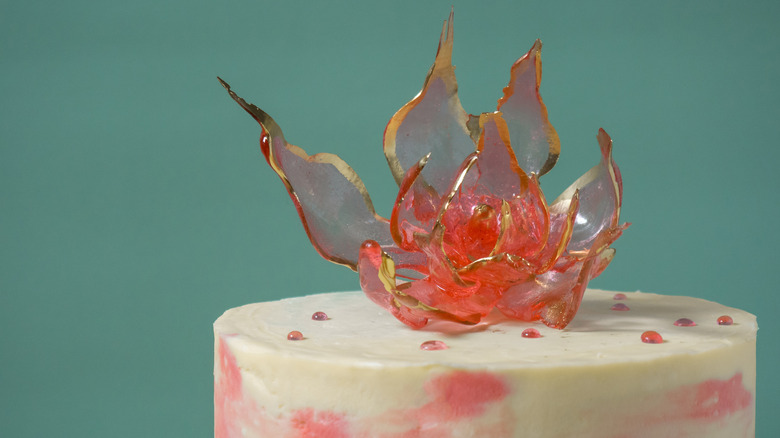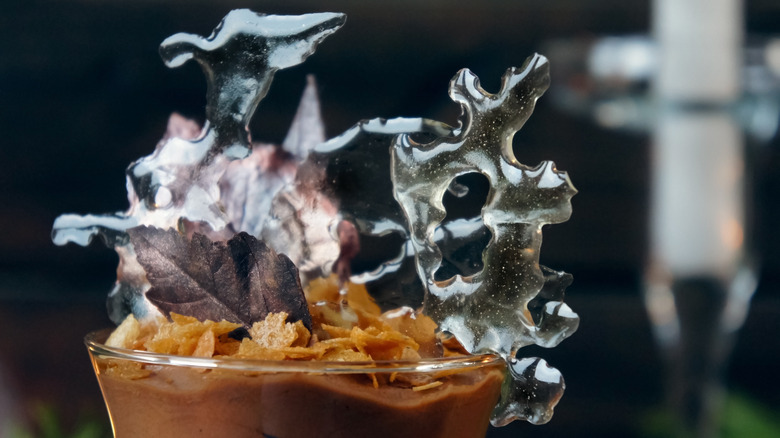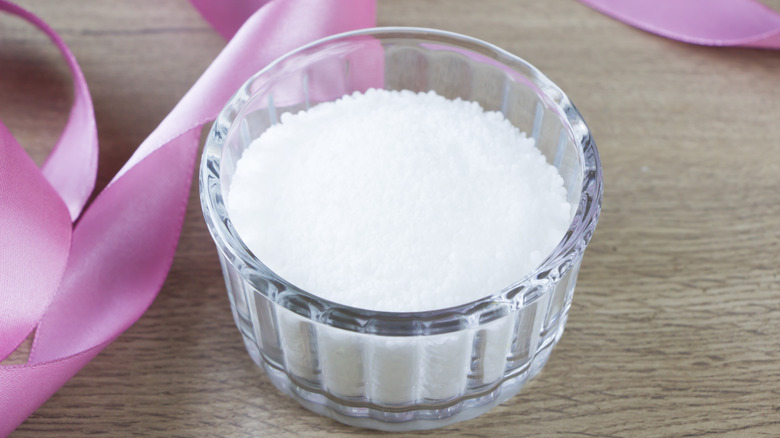Why Pro-Bakers Use Isomalt Instead Of Real Sugar
When it comes to decorating cakes, professional bakers have a few tricks and secret ingredients up their sleeves that home cooks may have never heard of. Some bakers use unexpected techniques to create perfectly even cake layers, or, when making sugar-based decorations, they might use a sugar alcohol called isomalt instead of melted white sugar.
Isomalt has a higher resistance to humidity than sugar, making it more stable and much less likely to collapse or melt in humid environments. It also has a higher melting point than sugar, so it stays malleable for longer. This is especially crucial when creating intricate designs and sugar sculptures that can't be completed in just a few seconds. What's more, if you make a mistake and want to start over, isomalt can be remelted and used all over again. Plain sugar, meanwhile, cannot return to its original crystalline structure once it's been melted, so reusing it can be tricky.
What's more, isomalt can create a cleaner look if you like to use food coloring in your cake decorations. Even after being melted, isomalt remains colorless and transparent, whereas real sugar may take on a brown tint as it caramelizes. As a result, isomalt is easier to dye for stronger and more vivid colors with no interference.
How to use isomalt to decorate cakes
Isomalt is sold in both granule and powder forms, though the granulated form is more commonly used for decorative purposes. Unlike real sugar, isomalt doesn't require the addition of water in order to melt smoothly. Instead, you can simply pour as much as you need into a pan and begin heating it. As it melts into a clear syrup, you still need to stir the isomalt frequently. It's also at this point that you should add colorants or flavorings, ideally in powdered form to minimize any bubbling.
Once the isomalt has melted all the way through, it can be poured into molds while still liquid, or cooled and then shaped by hand. Because isomalt should be heated to 333 degrees Fahrenheit for it to fully melt, you should transfer it to another container and float it on top of a bowl of water to cool for a few minutes before you touch it. As it cools and solidifies slightly, isomalt can be gently pulled and shaped into elegant cake decorations. You can even reheat it as necessary (in the microwave, for instance) if it gets too cool and stiff to manipulate. Best of all, any leftover isomalt can be saved and remelted for use in another baking project.
Isomalt is not an alternative for sugar in baking
Though isomalt is a fascinating alternative to sugar in the realm of dessert decorating, it's not an ideal replacement for sugar in the baking process itself. For one, isomalt is not as sweet as real sugar, so you may need to use more of it to achieve a similar level of sweetness in your recipes. Furthermore, as a sugar alcohol, isomalt can have laxative effects when consumed in large quantities. Sugar alcohols cannot be as easily absorbed by the intestines as regular sugar can. Regular servings of more than 40 grams of sugar alcohols can lead to unsavory side effects like bloating and colic, according to a study published by the European Journal of Clinical Nutrition.
Long story short, isomalt is a great ingredient to work with if you're using it primarily as an art medium. While it's not as potentially dangerous as aspartame, a sugar alcohol that may be a carcinogen, isomalt isn't an ideal sugar substitute to mix directly into your cakes, cookies, and other baked goods.



